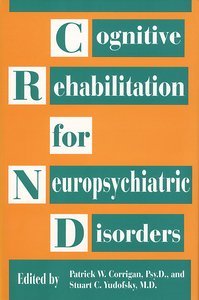American Psychiatry After World War II (1944-1994)
View Pricing
Description
The history of psychiatry is complex, reflecting diverse origins in mythology, cult beliefs, astrology, early medicine, law religion, philosophy, and politics. This complexity has generated considerable debate and an increasing outflow of historical scholarship, ranging from the enthusiastic meliorism of pre-World War II histories, to the iconoclastic revisionism of the 1960s, to more focused studies, such as the history of asylums and the validity and efficacy of Freudian theory. This volume, intended as a successor to the centennial history of American psychiatry published by the American Psychiatric Association in 1944, summarizes the significant events and processes of the half-century following World War II. Most of this history is written by clinicians who were central figures in it.
In broad terms, the history of psychiatry after the war can be viewed as the story of a cycling sequence, shifting from a predominantly biological to a psychodynamic perspective and back again—all presumably en route to an ultimate view that is truly integrated—and interacting all the while with public perceptions, expectations, exasperations, and disappointments.
In six sections, Drs. Roy Menninger and John Nemiah and their colleagues cover both the continuities and the dramatic changes of this period. The first four sections of the book are roughly chronological. The first section focuses on the war and its impact on psychiatry; the second reviews postwar growth of the field (psychoanalysis and psychotherapy, psychiatric education, and psychosomatic medicine); the third recounts the rise of scientific empiricism (biological psychiatry and nosology); and the fourth discusses public attitudes and perceptions of public mental health policy, deinstitutionalization, antipsychiatry, the consumer movement, and managed care. The fifth section examines the development of specialization and differentiation, exemplified by child and adolescent psychiatry, geriatric psychiatry, addiction psychiatry, and forensic psychiatry. The concluding section examines ethics, and women and minorities in psychiatry.
Anyone interested in psychiatry will find this book a fascinating read.
Contents
- Contributors
- Acknowledgments
- Introduction
- Part I: The Experience and Lessons of War
- Chapter 1. Military Psychiatry Since World War II
- Chapter 2. War, Peace, and Posttraumatic Stress Disorder
- Chapter 3. Silver Linings in the Clouds of War: A Five-Decade Retrospective
- Part II: Postwar Growth of Clinical Psychiatry
- Chapter 4. American Psychoanalysis Since World War II
- Chapter 5. The Evolving Role of the Psychiatrist From the Perspective of Psychotherapy
- Chapter 6. Psychiatric Education After World War II
- Chapter 7. Psyche and Soma: Struggles to Close the Gap
- Chapter 8. Postwar Psychiatry: Personal Observations
- Part III: Public Attitudes, Public Perceptions, and Public Policy
- Chapter 9. The National Institute of Mental Health: Its Influence on Psychiatry and the Nation's Mental Health
- Chapter 10. Mental Health Policy in Late Twentieth-Century America
- Chapter 11. Deinstitutionalization and Public Policy
- Chapter 13. The Consumer Movement
- Chapter 14. The Cultural Impact of Psychiatry: The Question of Regressive Effects
- Chapter 15. Managed Care and Other Economic Constraints
- Part IV: The Rise of Scientific Empiricism
- Chapter 16. American Biological Psychiatry and Psychopharmacology, 1944–1994
- Chapter 17. Functional Psychoses and the Conceptualization of Mental Illness
- Chapter 18. Diagnosis and Classification of Mental Disorders
- Part V: Differentiation and Specialization
- Chapter 19. Child and Adolescent Psychiatry Comes of Age, 1944–1994
- Chapter 20. A Brief History of Geriatric Psychiatry in the United States, 1944–1994
- Chapter 21. Addiction Psychiatry: The 50 Years Following World War II
- Chapter 22. Forensic Psychiatry After World War II
- Part VI: Principles and People 543
- Chapter 23. Ethics in the American Psychiatric Association After World War II
- Chapter 24. Women Psychiatrists in American Postwar Psychiatry
- Chapter 25. Minorities and Mental Health
- Index
About the Authors
Roy W. Menninger, M.D., is Past President and CEO of the Menninger Foundation and a member of the faculty of the Karl Menninger School of Psychiatry and Mental Health Sciences. He is also Clinical Professor of Psychiatry at the University of Kansas School of Medicine–Wichita, Kansas.
John C. Nemiah, M.D., is Professor of Psychiatry at Dartmouth Medical School and Professor of Psychiatry Emeritus at Harvard Medical School.
Related Products
Carousel Control - items will scroll by tabbing through them, otherwise arrows can be used to scroll one item at a time








